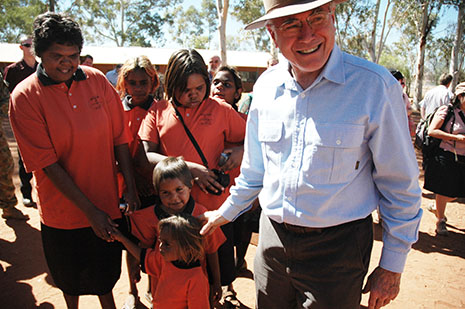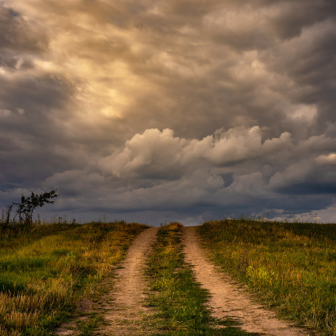A Different Inequality: The Politics of Debate about Remote Aboriginal Australia
By Diane Austin-Broos | Allen and Unwin | $29.99
WHEN I first visited a remote Aboriginal community, in May 1981, I experienced something about Australia of which I have never lost sight: geography had blunted colonial invasion. In certain regions, Aboriginal people were living in strong continuity with their pre-colonial past, and the nation that I thought I understood was here revealed to be incomplete, perhaps beyond completion. I have spent much of the past thirty years thinking, writing and teaching about that stubborn Otherness of remote Aboriginal Australia.
Diane Austin-Broos has been thinking about it too. In 2009 she published a superb ethno-history of one of the communities I visited in that formative journey. Arrernte Present, Arrernte Past: Invasion, Violence, and Imagination in Indigenous Central Australia is about Hermannsburg and how it shaped and was shaped by the culture of the Christianised Arrernte. Her new book, A Different Inequality, is equally committed to putting Aboriginal culture into history. But it does more than that: Austin-Broos essays a history of Australian intellectuals’ recent ideas about culture, equality and Indigenous entitlement.
Austin-Broos’s central point is that remote Aborigines are different from Australians as a whole in two ways that matter to public policy: their “culture” is not only their painting, their language and their cosmology, it is also their physical deprivation and insecurity, their filth, sickness and danger. Her insistently ambivalent depiction of remote Aboriginal communities resonates with the memory of my emotional confusion in May 1981, as I was introduced to a Hermannsburg family whose dignified friendliness was and was not belied by the sickening squalor of their unhoused bedding and cooking utensils and their scabby dogs.
What are we to do for people who grow up in such conditions? Austin-Broos’s primary proposal, given in her final chapter, is sound but hardly novel: children must be schooled to literacy and numeracy. She points to factors that have retarded remote Aboriginal primary education: the cost of delivering to decentralised communities, unstable schools, poorly trained teachers and parental diffidence. How to arouse Aboriginal parents’ interest in better education for their children? To that question she gives no clear answer. Rather, she evokes the Aboriginal values, economic practices and land ownership patterns that combine to militate against the ambition – common sense to most Australians – to advance self and family through investment in “human capital” and through determined and geographically mobile job-seeking. She admits to being unsure whether remote Aborigines really have the choice of trading off some of the security of their remote poverty on the chance of some of the health and prosperity of the mainstream. If there is a policy that would “reconcile current cultural attachments in communities with employment and capacity growth” then Austin-Broos aspires to be the author who spells it out. In her perplexity about how to solicit Indigenous engagement with what she considers to be improving activities, she is not alone.
While conspicuously unable to put her finger on the remedial actions that would sustain the primary education of remote Aboriginal Australians, Austin-Broos is confident that she knows the errors of other writers’ thinking. Most of her book is a description of what she calls a “failed debate” between two broad schools of thought. One she characterises as “opposing separate development,” the other as “defending the homelands.” Her account of that debate suffers from her eagerness to dichotomise a complex discussion.
Before she describes these two schools, she reviews the recent history of the discipline of anthropology (in which Austin-Broos is an outstanding academic practitioner). In writing about Aboriginal Australia, she argues, few anthropologists have grasped how much Aboriginal culture has been changed by colonisation. (She names some exceptions, without noticing that David Martin’s writing on Aurukun exemplifies the approach that she commends.) Instead of describing the regionally specific historical dynamics of these communities, most anthropologists have tended to “reify” Aboriginal culture, she says, rendering “culture” in terms of its continuities with pre-colonial values and practices.
That anthropology has evoked a classical model of Aboriginal culture is clear in Austin-Broos’s own ten-page epitome of the classical account; it is her book’s finest achievement. In elucidating the model she asserts its relevance but warns of its insufficiency; it no longer fully describes how Aboriginal people in remote regions live, for it neglects to say how much they suffer, now, in a morbid structure of massive socioeconomic inequality. A policy-relevant and honestly compassionate anthropology should go beyond this classical account in order to describe and explain persistent psycho-social and physical pathologies and material poverty. A realistic understanding of remote Aboriginal communities is not possible, she concludes, if all we see in the “homelands” is the survival of “Aboriginal culture” described in wholly positive terms. These communities are not “bounded wholes,” but “variable, changing, and ‘fractured’ by encapsulation in the state and by their marginal economies.”
How has this complex truth (cultural difference turned problematic, in a structure of inequality) eluded the two sides of the “failed debate”? I am not persuaded by Austin-Broos’s “balanced” (to use her own self-description during an event in Sydney in August) position on the politics of difference and the politics of equality. That is, I think she overstates the singularity of her own position and caricatures work with which she actually shares ground. Her account of the debate has two flaws that make it more self-serving than accurate: the two sides are poorly labelled, and her reading of others’ work is often unsympathetic and sloppily expressed.
That there is a responsibility to read and report colleagues’ work sympathetically is a point that Austin-Broos herself made in Sydney. During that discussion, I pointed out that her book’s index qualified the crucial concept “inequality” with the adjective “socioeconomic.” I asked her if the index was accurate. Or had the indexer not seen that a notion of “political inequality” was implicit in her argument, even if she had not used the phrase “political inequality”? Austin-Broos replied that Aborigines’ inequality was certainly political as well as socioeconomic: “If you know where and how to look, there is plenty about political inequality in this book.” I agree: her critical remarks on the NT Emergency Intervention imply that she sees Aborigines as suffering from political inequality.
Austin-Broos would have written a better book (and kept better standing with her dismayed colleagues) had she known “where and how to look” for the implicit arguments with which she shares ground in much of the research that she takes to task. For example, it is important to Austin-Broos that Aboriginal people be described as “in distress” and as “suffering” (the success of Peter Sutton’s The Politics of Suffering has promoted the latter word’s importance). When she cannot find these words in some commentaries on the Intervention, she writes that the authors (unnamed academics at the Australian National University’s Centre for Aboriginal Economic Policy Research, or CAEPR) “seemed disinclined to dwell on social suffering or distress as part of homelands life.” Within a few lines this condition of being “disinclined to dwell” has hardened: “the failure of those who defended the homelands was reluctance to acknowledge distress and the salience of poverty.” A few pages later: “some of those who defended the homelands were unwilling to acknowledge the distress in the remote communities and the salience of poverty.” The words that I have italicised insinuate, with escalating trenchancy, the unnamed authors’ moral callousness, implicitly celebrating Austin-Broos’s courage and sensitivity. Had she read these authors more generously she might have inferred compassion – notwithstanding the absence of the words “distress” and “suffering” – as real as her own. Knowing how and where to look when reading others’ writing is itself an ethical investment.
ANTHROPOLOGISTS figure mostly on one side of Austin-Broos’s map of the “failed debate” – as romantic, reifying advocates of policies that they hope will sustain Aboriginal homelands. Against them are those who “oppose separate development.” According to Austin-Broos, the latter see the misery and pathology of the homelands, but they see little else. For these critics, land rights, the various policies that have enabled decentralisation and the channelling of public funds through Aboriginal service-delivery organisations have all – unintentionally – prolonged Aborigines’ exclusion from Australian society and occasioned much suffering. In this “anti-separatist” school of thought Austin-Broos includes John Reeves, Helen Hughes, Colin Tatz, Boni Robertson, Peter Howson, Roger Sandall, Christopher Pearson, Peter Sutton, Noel Pearson, Marcia Langton, Gary Johns and Bob Gregory. Conceding that there are significant differences of opinion among these writers (on land rights, on the duties of the state, and on the nature and significance of Aborigines’ continuing cultural difference), Austin-Broos nonetheless sees them as – variously – “anti-separatist.”
This could be a defensible lumping together if we had an idea of what Austin-Broos means by “separatism.” The index doesn’t include “separatism,” and Austin-Broos never pauses to say what she means by that word. Neither “separatism” nor “anti-separatism” emerges from her account as a coherent policy perspective.
Austin-Broos uses the term “defending the homelands” to label the romantic, “unwilling to acknowledge distress” side of the debate. We can infer, from her binary approach, that the essence of “separatism” is to “defend” the homelands. What policy would that be? Here we encounter another problem of terminology. Austin-Broos uses “homelands” to refer not only to “small communities” (as small as ten to twenty people, living on their own country) but also to “remote communities” (such as the former missions and government settlements) that now amount – in some cases – to small towns of up to two thousand people. This distinction within “remote” has policy significance; as certain larger “remote communities” have been selected as sites where services will be concentrated, costly support for the many tiny communities is being discontinued. I presume that by “defending the homelands” Austin-Broos means a wish to continue or exceed past levels of support – housing, vehicles, CDEP (Community Development Employment Projects) funds – for the tiny outstations that radiate out from these larger remote hubs.
In her account of the “defence” of government support for this highly decentralised pattern of residence, Austin-Broos seeks to “distil a public position indicative of CAEPR.” Her distillation is too smooth by half, and again the problems are Austin-Broos’s fondness for crystalline dichotomies and her question-begging names for the policy positions that she would distinguish.
For example, she distinguishes a “community-based” from a “human capital” approach. The “community-based” approach flows from the analysis of remote Aboriginal communities’ cultural and physical distance from large, diverse labour markets. For about twenty years, researchers have argued that there is a good chance that the education of remote Aboriginal children will prepare them for jobs that do not exist, in these regions, in sufficient quantities to make a difference to the rate of unemployment. Austin-Broos does not dispute that analysis, but she implies that those making it have been indifferent to education. That is, she aligns her advocacy of primary education with her advocacy of a “human capital” approach, while associating CAEPR with “the community-based approach rather than a human capital one.” This is a false dichotomy, for both the “human capital” approach and the “community-based” approach aspire to a credible vision of remote Aboriginal education.
What is missing from Austin-Broos’s account of “the CAEPR view” is any sympathy for the difficulty that faces those who try to say what a “community-based” education should be. The problem does not arise from assuming – in a romantic way – that education will cost remote Aborigines their culture. Writers associated with CAEPR have been alive to the possibility of education for remote Aborigines, but they have been curious (as Austin-Broos is) about what kind of education could attract Aboriginal parents’ commitment. The pathway from education to employment will not work in some regions unless education and labour-market strategies consider the peculiarities of regional labour markets and the aspirations of parents. I don’t know any researcher in this field whose response to the difficulties of the remote education–employment transition (or human capital formation, to use Austin-Broos’s term) is to discount education for Aborigines.
Time and again, Austin-Broos reads arguments for region-specific education and economic development strategies as if they were arguments for “Aboriginal”-specific development strategies. There may well be some unsophisticated policy-thinking that falls into this trap – invoking a general and romantic model of “Aboriginal” rather than considering the potential and the limitations of each region. If this is what she means by “separatism,” then one can endorse her condemnation of it. However, the work that Austin-Broos has targeted is not “separatist” in either the spatial or the fiscal sense; it is more precisely characterised as “regionalist,” and it is better, more persuasive work than Austin-Broos concedes.
Austin-Broos’s book works best when she sticks closely to what individual writers have said over time. She can be a generous and respectful reader. But her “distillation” of “the CAEPR view” compromises her account of particular arguments that have come out of that organisation. She attributes to CAEPR “the view that major employment growth would be incompatible with the maintenance of cultural difference,” for example, and she writes that CAEPR seeks to interpret Aborigines’ socioeconomic inequality as if it were merely their way of expressing and perpetuating cultural difference.
CAEPR’s founding director, Jon Altman, is the main victim of this caricature, and A Different Inequality will do Australia a disservice to the extent that it encourages readers to dismiss his work as “romantic” and blind to “suffering.” Jon Altman has done more than any other researcher to develop a model of the remote Aboriginal economy that is empirically based and policy-realistic. He sees regional economies as made up of three sectors: production for the market, subsistence production, and public-sector subsidies, including welfare payments to individuals. The content and size of each of these three sectors vary by region and through time. Altman’s framework can be applied region by region to identify the natural, human and political resources upon which a realistic development strategy could be based. (His model is just as relevant to regions in which there are few Aborigines.)
The work of regional specification using Altman’s categories is just beginning – and, as Austin-Broos observes, the profiles of Central Australia and of Arnhem Land (where Altman mostly works) are likely to be different. A program of applied research based on Altman’s framework is at risk unless policy-makers and research funders read with scepticism Austin-Broos’s far-too-rough guide to the “politics of debate about remote Aboriginal Australia.” •




